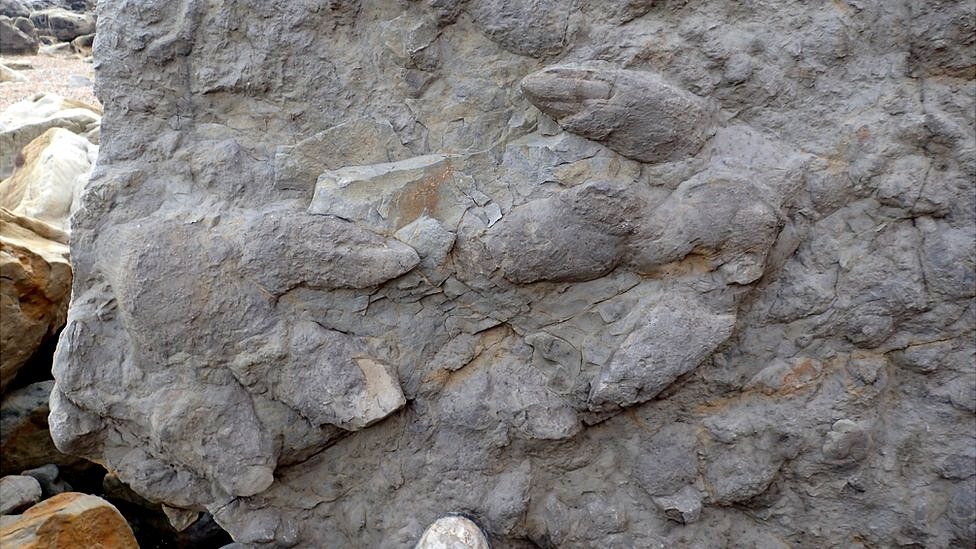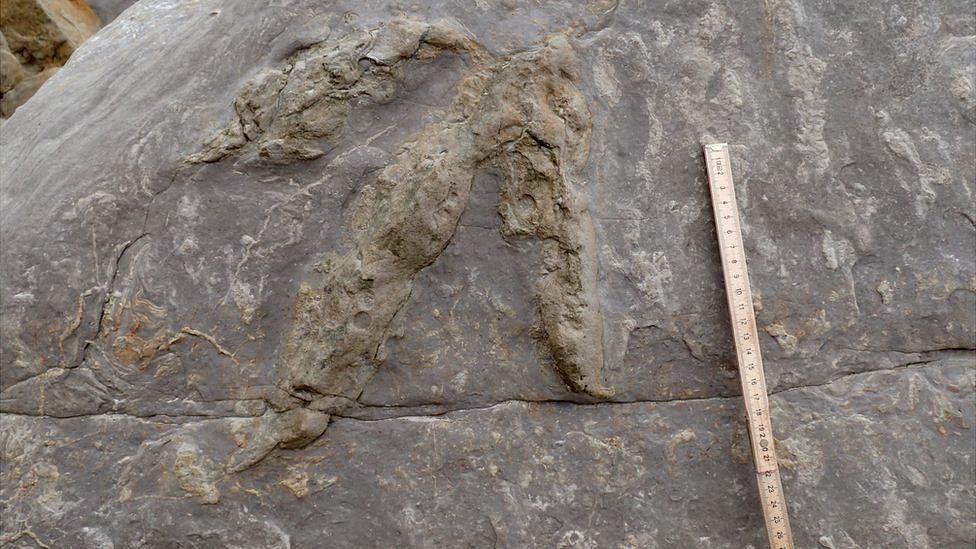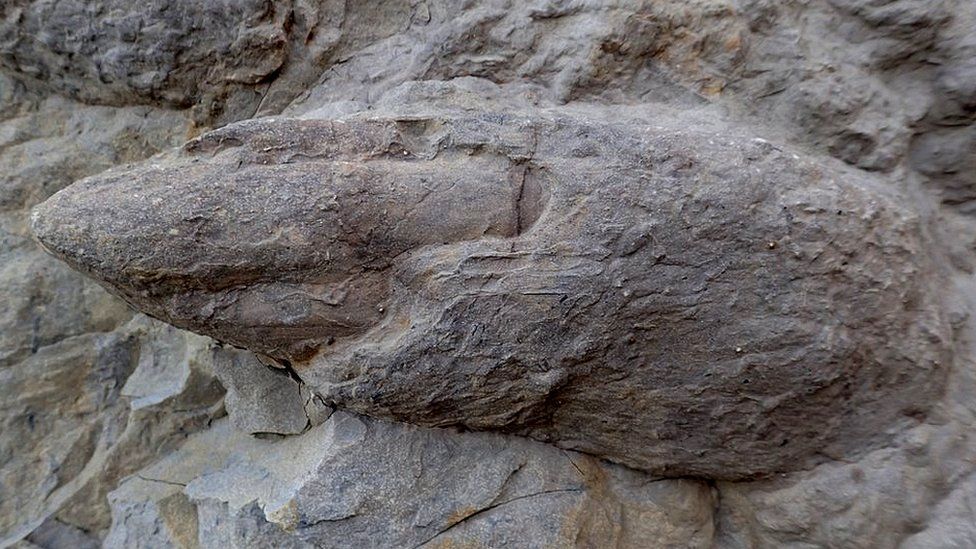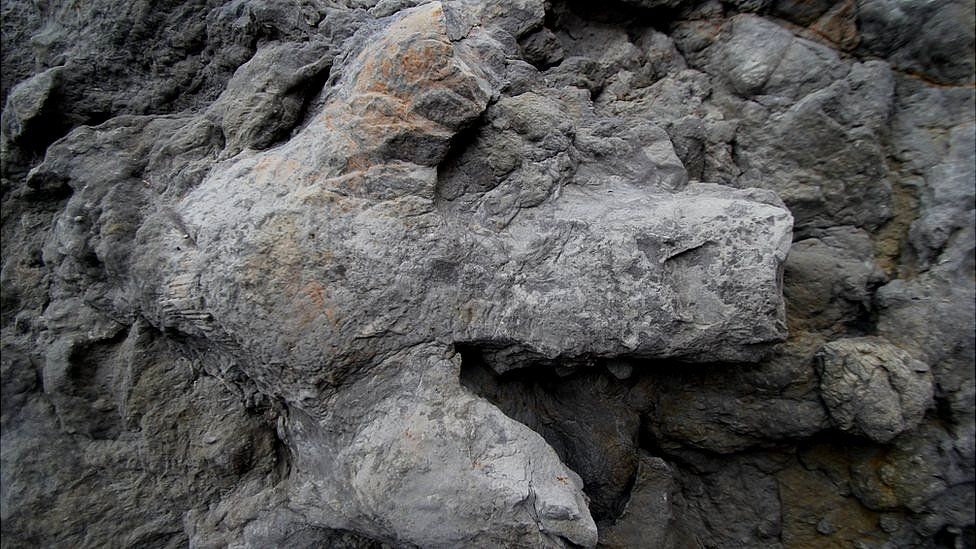Hastings dinosaur footprints exposed by cliff erosion
 Two large Iguanodontian footprints with skin and claw impressions
Two large Iguanodontian footprints with skin and claw impressions
Dozens of well-preserved dinosaur footprints from at least 100 million years ago have been uncovered in East Sussex.
At
least seven different species were identified by University of
Cambridge researchers during the past four winters following coastal
erosion along the cliffs near Hastings.
They range in size from
less than 2cm to more than 60cm across, and are so well-preserved that
even the skin, scales and claws are easily visible.
There are more than 85 markings, all of which date from the early Cretaceous period.

A small theropod footprint
The species include Iguanodon and Ankylosaurus, a
type of stegosaurus, possible examples from the sauropod group, and
meat-eating theropods.
Hastings has long been a site of special interest for fossil
hunters with items ranging from fragments of dinosaur bones to complete
fish being previously uncovered, but footprints are less common.
The footprints are the first to have been discovered in 25 years, with earlier findings being far less varied and detailed.

A close up of a claw impression from an Iguanodontian footprint

A large Iguanodontian footprint
The results are reported in the journal Palaeogeography, Palaeoclimatology, Palaeoecology, authored by Anthony Shillito and Dr Neil Davies.
"Whole body fossils of dinosaurs are incredibly rare.
"A
collection of footprints like this helps you fill in some of the gaps
and infer things about which dinosaurs were living in the same place at
the same time," Mr Shillito said.
He added that the "incredible detail" clearly showed "the texture of the skin and scales, as well as four-toed claw marks".
The
area where the footprints were found was likely near a water source,
and in addition to the footprints, a number of fossilised plants and
invertebrates were also found.

More dinosaur footprints are thought to be hidden within the eroding
sandstone cliffs, but the researchers said the construction of sea
defences meant they could "remain locked within the rock".
Nenhum comentário:
Postar um comentário
Observação: somente um membro deste blog pode postar um comentário.